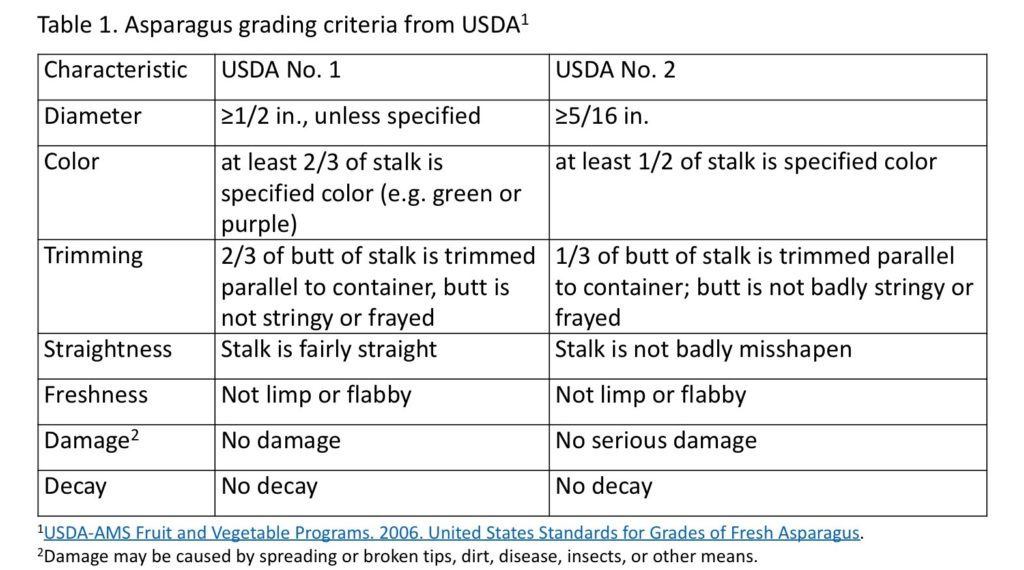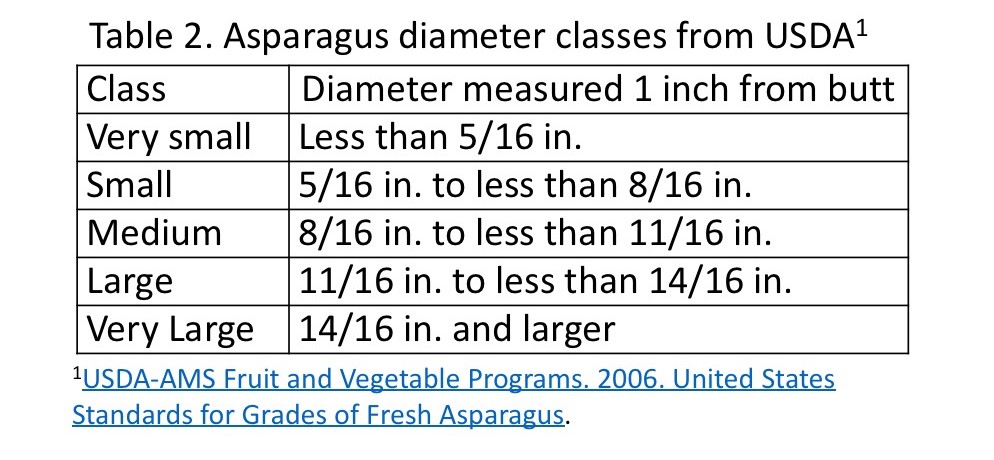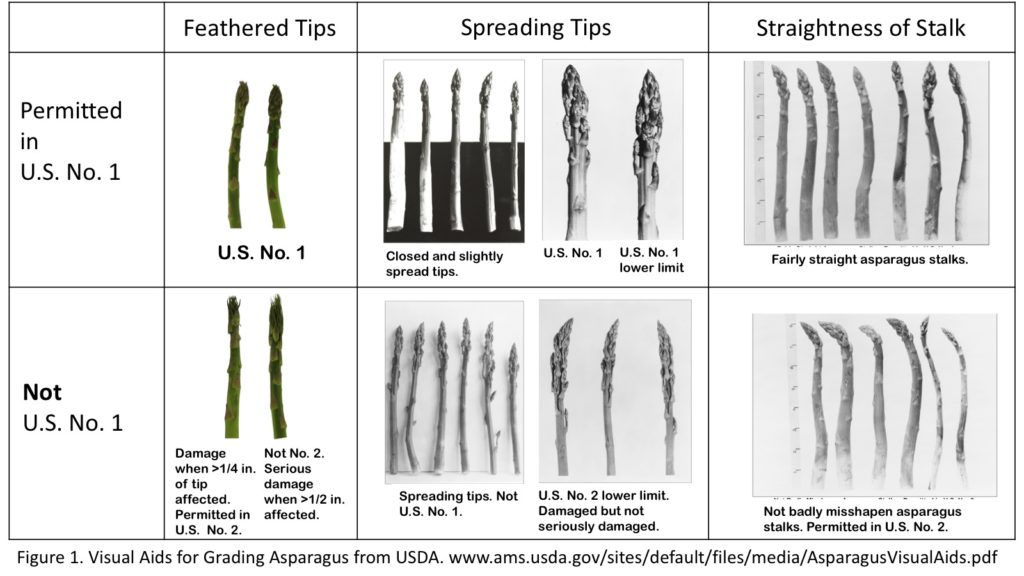Asparagus is one of the first field-grown Indiana vegetables on the market. This article reviews harvest, grading and postharvest care recommendations to help you start the season with top quality asparagus.
Getting quality asparagus to market means making sure to pick good spears at the right time, grade according to your market requirements, and keep the spears cold, moist and upright.
Plan to harvest early in the morning when it is still cool. Spears to be sold should be tight at the tip, dark green, and at least 3/8 inch in diameter. During the harvest season the only spears left standing in the field should be those you expect to harvest in the future. Don’t let unmarketable spears continue to grow and develop into fern. They can harbor diseases and insects, and also slow growth of new spears.
The grading of spears after harvest will depend on your market. The USDA standards presented here provide a reference for comparison to your grading criteria, whether or not your market requires USDA standards. The best asparagus is fresh (not wilted), straight, green (or other specified color) for most of the stalk length, and has a tight tip that is not spreading. The butt end is smooth and flat. Table 1 below summarizes the USDA standards for No. 1 and No. 2 grades, and Table 2 shows the various diameter classifications defined by USDA. According to USDA standards, minimum spear length may be specified to the nearest 1/2 inch but is not required. Spears are typically 7 to 9 inches. Figure 1 illustrates USDA criteria for asparagus.
Asparagus should be cooled as quickly as possible and kept cool. The optimum temperature range is 32°F to 35.6°F. To cool asparagus, it can be dunked in or showered with cold water. The water should be of drinking water quality and, if used more than once, changed regularly and disinfected using an approved material (see the Safe Produce Indiana Resources page for an Excel tool listing sanitizers labeled for produce). The harvested spears remain alive and actively respiring until they are cooked or eaten. Respiration creates heat and burns up carbohydrates. Keeping the asparagus cool reduces the rate of respiration, which is essential for maintaining quality.
High relative humidity is also important for asparagus. The desired range is 95% to 100%. If asparagus will be stored in a cooler, it may be placed in plastic bags to maintain high humidity. The butt ends of spears should be kept moist. They may be set on a moist pad or in 1/2 inch of water.
Improper storage conditions can lead to poor quality asparagus. Spears held horizontally for a period of time will bend upwards at the tips; it is best to hold spears standing up. Asparagus quickly gets tough if kept above 50°F. It will also get tough if exposed to ethylene gas. Ethylene may be produced by the asparagus itself if it is bruised, broken, or diseased. Low humidity will result in shriveling and weight loss. Asparagus will freeze at temperatures below 31°F, becoming watersoaked and mushy when thawed.
Experienced asparagus producers probably have a good sense of how much the crop will grow under different weather conditions. For those with less experience, Table 3 may help guide decisions about when to harvest. Is it necessary to pick every day, or is it ok to skip a day? The warmer the weather, the faster the spears lengthen. The table shows how many inches a spear will grow each day, depending on its size and the average temperature. For example, with a high of 70 and a low of 50, the average temperature would be (70+50)/2=120/2=60°F. At an average temperature of 60°F, a 2-inch spear would grow 1.4 inches in one day, a 4-inch spear 2.0 inches, and a 6-inch spear 2.7 inches. After one day, the spears that started out at 6 inches would be ready to pick; after 2 days the 6-inch spears would be 11.4 inches, probably past the picking stage, and after two days the 4-inch spears would be 8 inches long and ready to pick.



